Weatherstripping might seem like a small detail, but it makes a big difference in your home’s comfort and efficiency. It’s a seal applied around doors (and windows) to block out drafts, moisture, dust, and noise—keeping the outside air where it belongs.
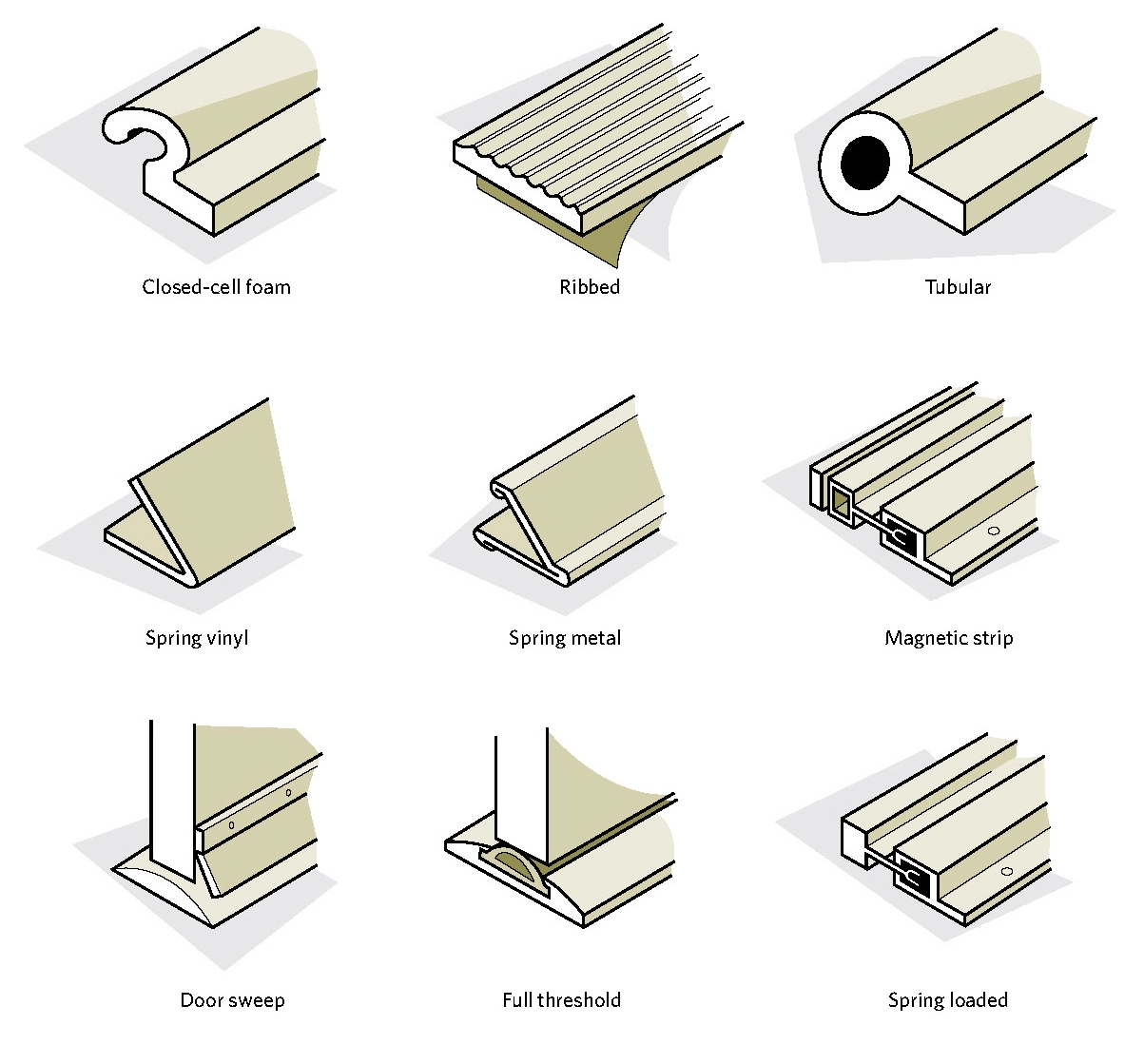
By choosing the right type of door weatherstripping, you can lower energy bills, reduce wear on your HVAC system, and make every room feel more comfortable year-round. Whether you’re sealing a front door, sliding patio entry, or garage access, this guide will walk you through the most effective weatherstripping options and help you pick the best one for your needs.
Types of Weatherstripping for Doors
Not all weatherstripping is created equal. The best type depends on your door’s location, the climate you live in, and how much traffic the door gets.
Let’s explore the most popular types of door weatherstripping so you can find the perfect fit for your needs.
1. V-Strips (Tension Seals)
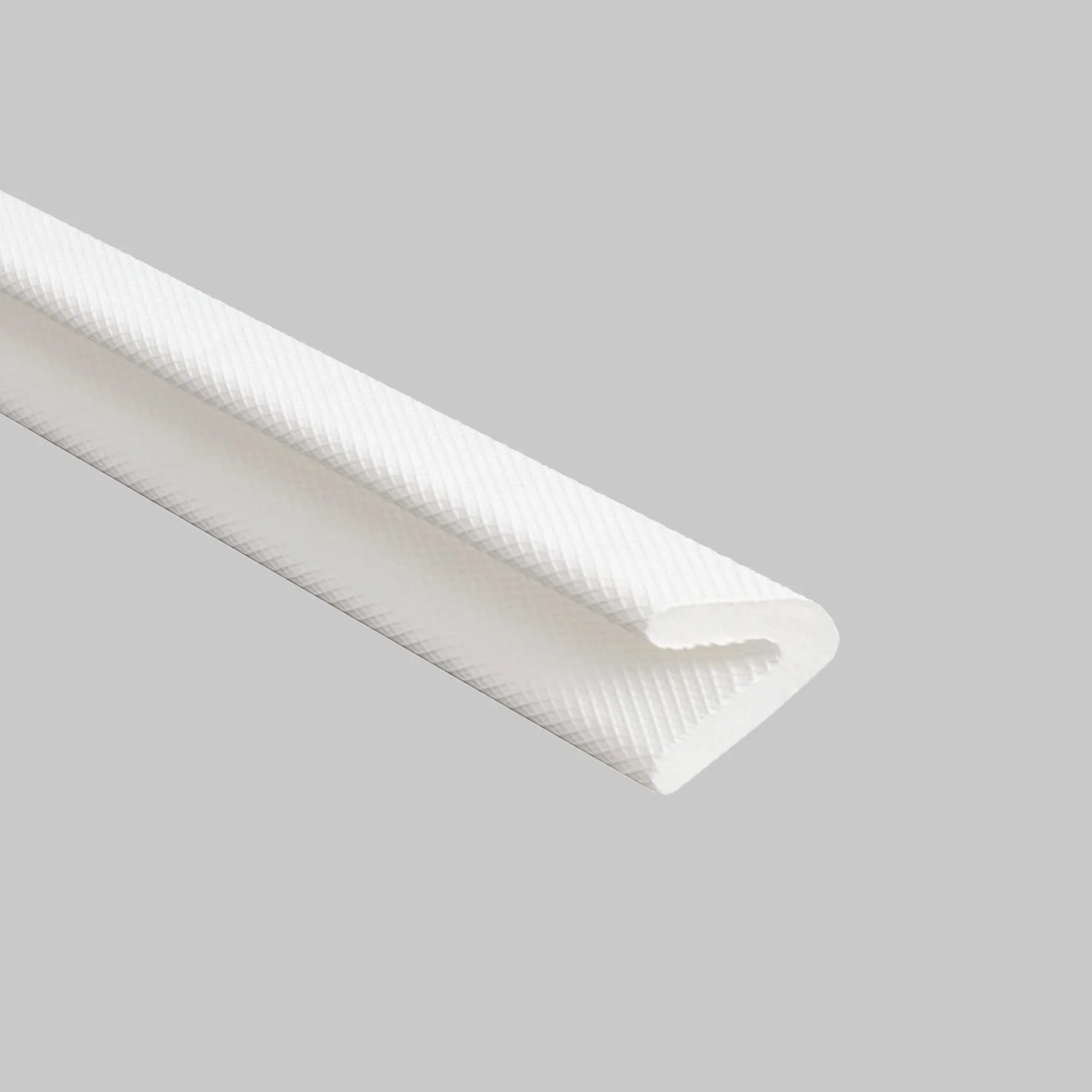
These are flexible strips of vinyl or metal folded into a V shape. When compressed, they spring open to seal gaps.
Best for: Sides and tops of doors, sliding windows
Pros: Hidden from view, long-lasting, effective against drafts
Cons: Can be tricky to install precisely, especially around corners
2. Felt Weatherstripping
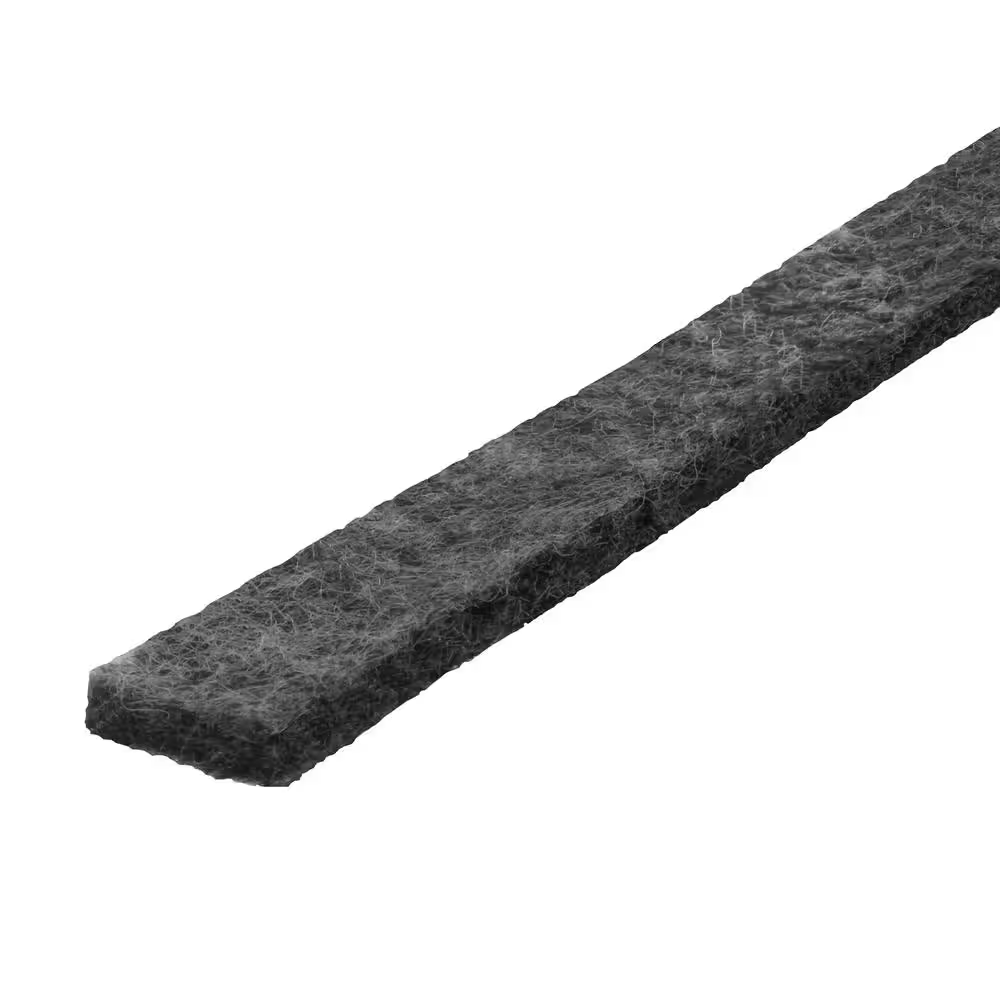
Made from wool, cotton, or synthetic fibers, sometimes reinforced with metal.
Best for: Light-use interior doors or older homes
Pros: Inexpensive, easy to cut and staple or glue
Cons: Wears out quickly, offers limited draft protection
3. Foam Tape

Self-adhesive foam strips (often EPDM or rubber) that compress into tight gaps.
Best for: Irregular edges around doors and window frames
Pros: Super easy to apply, works on uneven surfaces
Cons: Shorter lifespan, can peel off in high-moisture areas
4. Tubular Rubber or Vinyl
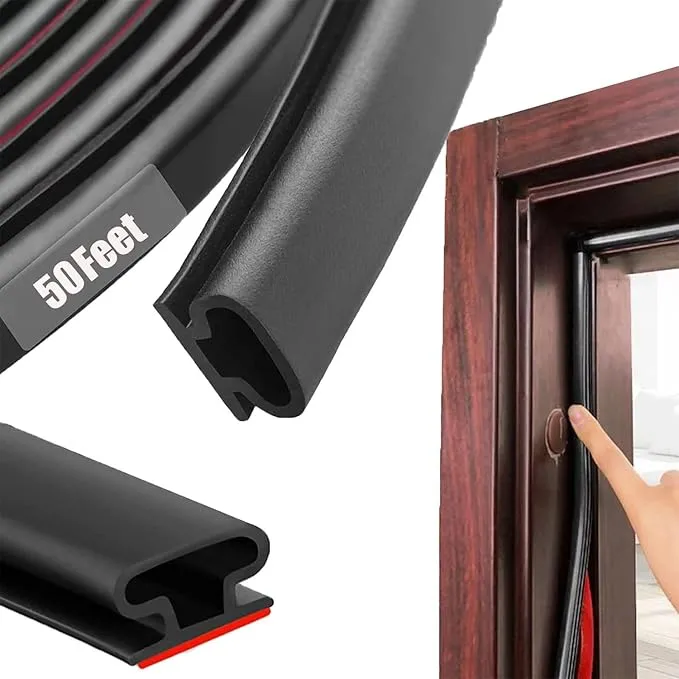
A hollow tube mounted on a strip, this design compresses to form a tight seal.
Best for: Exterior doors with consistent use
Pros: Excellent for blocking air and water
Cons: Needs precise fitting and tools for installation
5. Door Sweeps
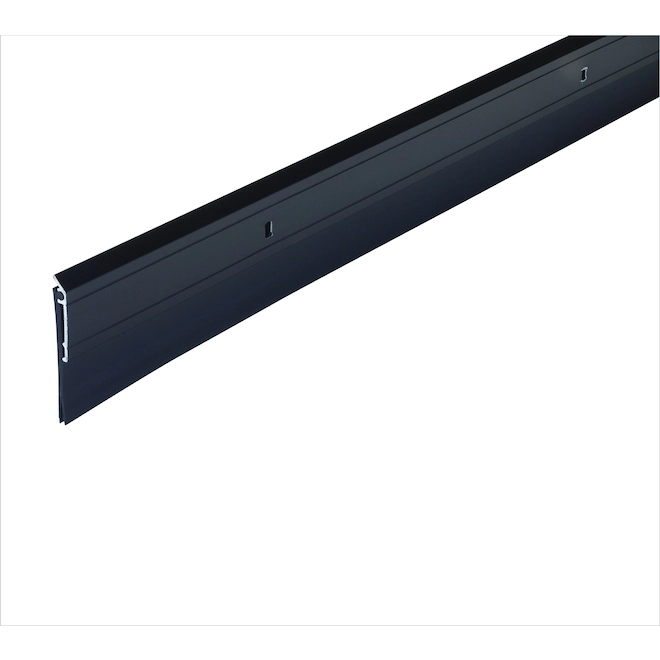
A metal or plastic strip attached to the door bottom with a flexible blade that drags along the threshold.
Best for: Exterior doors exposed to drafts, pests, or weather
Pros: Highly effective, affordable, available in many sizes
Cons: May drag on rugs or carpeting if not trimmed properly
6. Door Shoes

This type wraps around the bottom of the door with U-shaped coverage.
Best for: Rainy climates, uneven floors
Pros: Provides excellent all-weather protection
Cons: Requires door removal for installation
7. Reinforced Vinyl
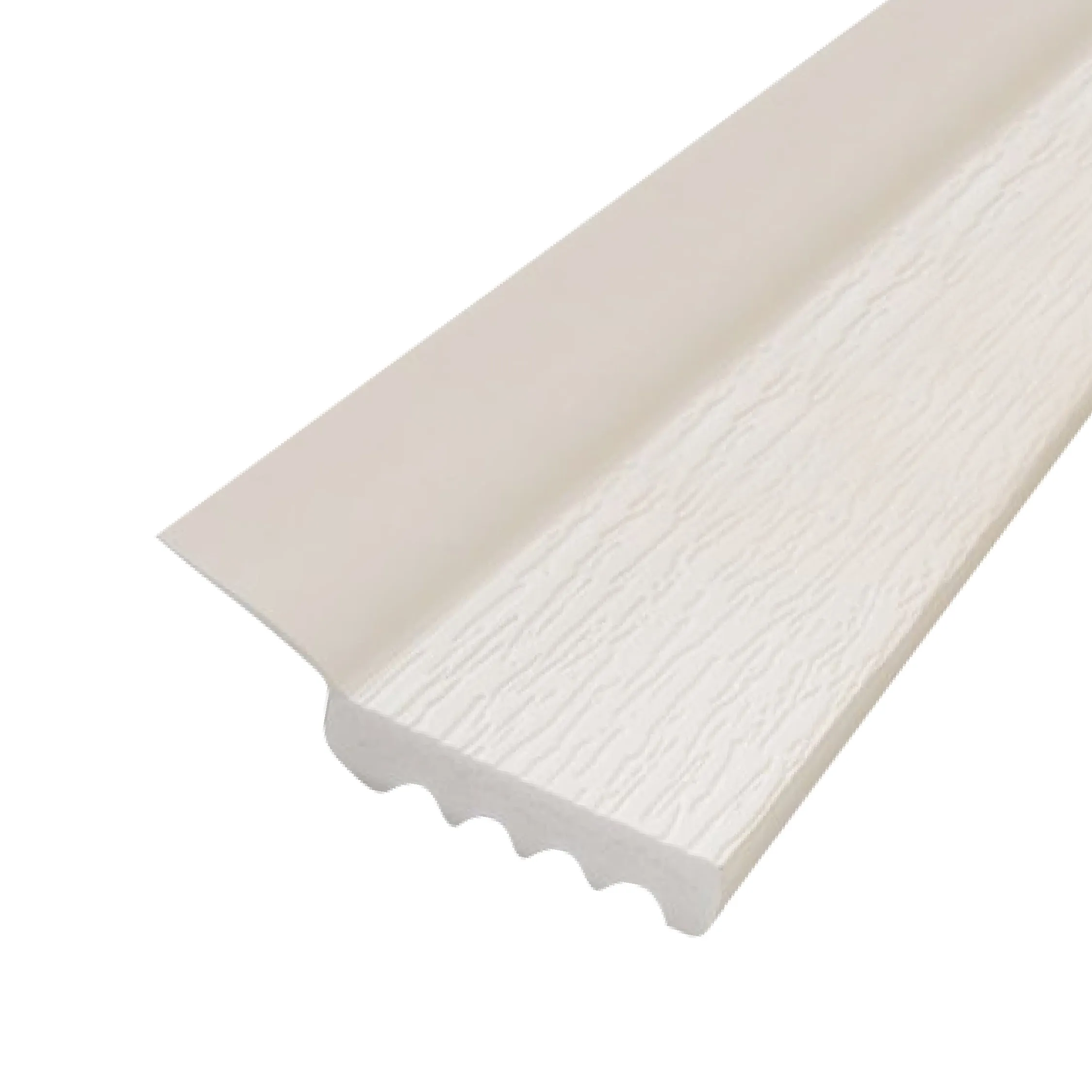
A durable vinyl gasket attached to a metal or wood mounting strip.
Best for: Door stops, side jambs, and thresholds
Pros: Tough and weather-resistant
Cons: Needs a backing frame, may be visible
8. Magnetic Weatherstripping

Just like a fridge door—uses magnets to hold tightly closed.
Best for: Steel entry doors
Pros: Air-tight seal, easy alignment
Cons: Only works on metal doors
9. Pile/Finned Weatherstripping
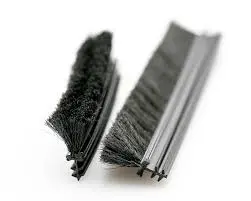
Made of dense fabric or fibers, often used in tracks of sliding doors. Some versions include a center fin for better sealing.
Best for: Sliding patio doors, windows
Pros: Flexible, durable, quiet
Cons: Attracts dust, can wear down with frequent use
10. Interlocking Metal Channels
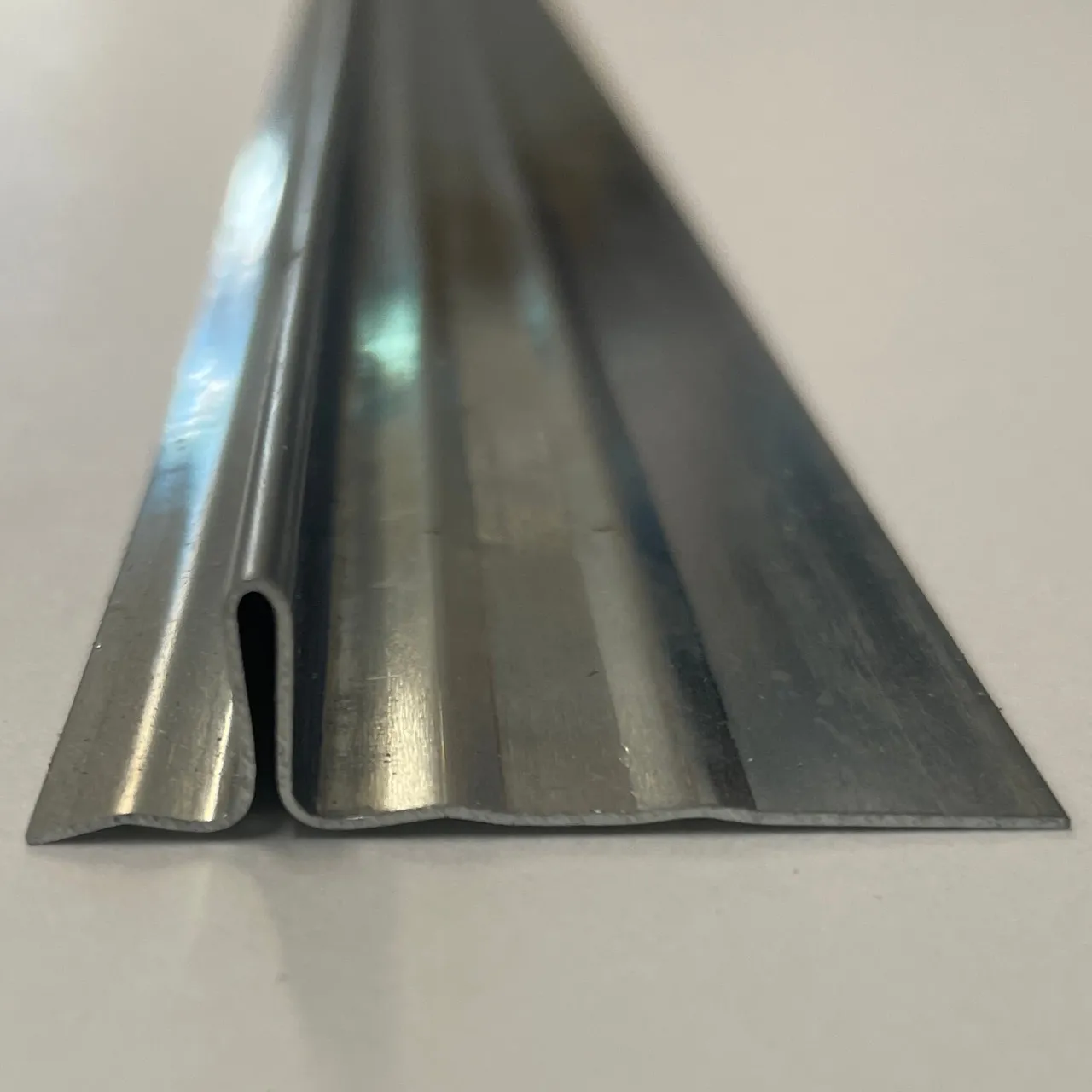
Two metal pieces (one on the frame, one on the door) that interlock when closed.
Best for: Historic doors or areas needing a strong seal
Pros: Superb air and moisture barrier
Cons: Installation requires precision and often a pro
11. Spring Bronze

Thin, flexible bronze strips nailed along the door frame.
Best for: Historic homes or where appearance matters
Pros: Attractive, long-lasting, highly effective
Cons: Time-consuming to install, more expensive
12. Bulb Thresholds

These use a bulb-shaped rubber seal integrated into the threshold.
Best for: Under exterior doors
Pros: Good protection from drafts and rain
Cons: Subject to wear from frequent foot traffic
13. Frost-Brake Thresholds

Include insulated breaks that prevent cold from transferring through metal.
Best for: Cold or snowy climates
Pros: Limits heat loss, supports energy savings
Cons: Often requires full replacement of the threshold unit
Installation Tips

Installing weatherstripping the right way ensures it works effectively and lasts longer. Here are some quick tips to help you get the job done right:
Always clean and dry the surface before applying any material
Measure carefully and add a little extra length when cutting
Choose peel-and-stick options for easy DIY projects
Use nails or screws for durability on frequently used doors
Test door operation after installation to ensure a proper seal
Replace worn strips immediately to maintain energy efficiency
Maintenance and When to Replace Weatherstripping

Check your weatherstripping at least once a year, especially after harsh weather, to ensure it’s still sealing properly.
Signs it needs replacing include visible light around door edges, cracked or compressed material, sticking doors, increased drafts, or higher energy bills.
Regular maintenance keeps your home energy-efficient, quiet, and comfortable year-round.
FAQs About Door Weatherstripping
1. How long does weatherstripping typically last?
It depends on the material. Felt may last a year or two, while rubber, silicone, or bronze can last up to 5 years or more with proper maintenance.
2. Does weatherstripping help with noise reduction?
Absolutely. A tight seal from quality weatherstripping can block outdoor noise, making your home quieter and more peaceful.
3. How do I know if my door needs new weatherstripping?
If you feel drafts, see light around the door edges, or your energy bills are rising, it’s likely time to inspect and replace the strips.
Conclusion
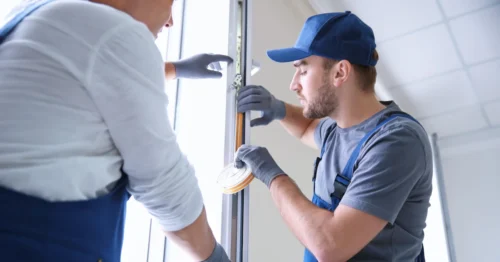
Choosing the right weatherstripping for doors improves comfort, saves energy, and extends your door’s lifespan. With options like foam tape, door sweeps, or tubular seals, there’s a solution for every space and budget—just match the material to your door’s use and climate conditions.
Ready to seal in comfort and savings? Explore high-quality weatherstripping options that suit your needs, or reach out to a pro for expert installation. A well-sealed door is a smarter, quieter, and more efficient home upgrade.
![Apro logo - 25 Types of Door Hinges and Their Best Uses [Dezember 2025] - APRO Apro logo](https://aprowin.com/wp-content/uploads/2024/08/Apro-logo.webp)
![A bifold glass door opens to a serene courtyard featuring a beautiful fountain at its center - 25 Types of Door Hinges and Their Best Uses [Dezember 2025] - APRO A bifold glass door opens to a serene courtyard featuring a beautiful fountain at its center](https://aprowin.com/wp-content/uploads/2024/10/A-bifold-glass-door-opens-to-a-serene-courtyard-featuring-a-beautiful-fountain-at-its-center.webp)
![Sunflower view through modern black aluminum window frame - 25 Types of Door Hinges and Their Best Uses [Dezember 2025] - APRO Sunflower view through modern black aluminum window frame](https://aprowin.com/wp-content/uploads/2024/10/Sunflower-view-through-modern-black-aluminum-window-frame.webp)
![Modern entrance featuring glass doors and awning for commercial projects - 25 Types of Door Hinges and Their Best Uses [Dezember 2025] - APRO Modern entrance featuring glass doors and awning for commercial projects](https://aprowin.com/wp-content/uploads/2024/10/Modern-entrance-featuring-glass-doors-and-awning-for-commercial-projects.webp)
![Stylish residential project showcasing modern architecture and a beautiful pool area - 25 Types of Door Hinges and Their Best Uses [Dezember 2025] - APRO Stylish residential project showcasing modern architecture and a beautiful pool area](https://aprowin.com/wp-content/uploads/2024/10/Stylish-residential-project-showcasing-modern-architecture-and-a-beautiful-pool-area.webp)

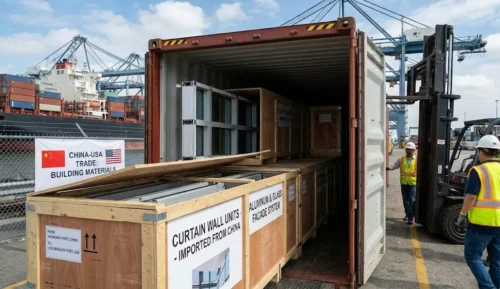





![APRO logo white - 25 Types of Door Hinges and Their Best Uses [Dezember 2025] - APRO APRO logo white](https://aprowin.com/wp-content/uploads/2024/07/APRO-logo-white.webp)